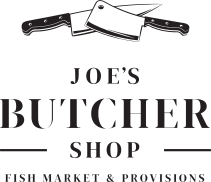There are some interesting things going on in the beef markets in the last few months. Unfortunately for consumers they are all pushing prices higher, not lower.
Four issues/factors are the main culprits in rising beef prices. Those factors are 1) the summer drought in Texas and Oklahoma, 2) the price of corn, 3) the entrance of major super markets into the USDA Choice beef market, and 4) new free trade agreements, specifically with South Korea.
The summer drought in Texas and Oklahoma has placed a curse on beef markets for at least the next 18 months as it trashed the supply of beef. Texas and Oklahoma produce a very large percentage of what is known as “feeder cattle” (the driving force in the market's cattle pricing). Typically, feeder cattle are sold to feed lots at a weight near 400lb, the feed lots acquire the cattle and feeds flaked corn until the cattle reach 900 to 1000lb at slaughter. With the drought, feeder cattle were being sold at weights as low as 200lbs as non-corn feed sources were not available. Cattlemen feeling the pinch not only had to sell at low weights, but often left the business selling their cows (females) as well as their steers (males). The result was a drop in supply from a) having to spend more time on the feed lot, and b) lack of births as there was nothing to feed young cattle and cows were sold.
Unlike pork or chicken, the recovery of our beef supply isn't a quick fix, gestation and time to grow mean a supply deficit for at least 18 and more likely 24 months. While Joe's locally raised Dry Aged Beef and our Nebraska co-op raised herds were not effected by the drought, the cost of beef to Joe's still moved with the market as our farmers sought to maximize their profits.
Market cattle eat corn, plain and simple. Even our hormone and antibiotic free cattle eat corn their last 60 days to help create internal marbling of the meat and higher USDA grades. Corn prices while lowering a bit lately are still near record highs, with the leading cause of price increases being Ethanol production and the previously mentioned hot weather. Ethanol now consumes 1/3 or more of the U.S. corn supply. Despite many studies showing that ethanol from corn is not a long term viable solution to our energy woe's , our government recently increased the amount of ethanol allowed in gas blends from 10% to 15%. The resulting increase in demand will only serve to increase the price of corn and therefore anything that eats it.
A third cause of rising beef prices is the entrance of two large supermarket chains into the lower tier of the USDA Choice beef market. Walmart and Kroger both announced that they would add lower tier USDA Choice beef to their case as an option next to their mainstay of USDA Select Beef. Even though Choice will not be either grocers primary program, the sheer number of stores in these grocery chains has pushed and shifted the demand curve for better beef higher. This has sent large packing houses like National Beef, Excel, and IPB/Tyson looking for better grading cattle that simply are not in the market to be purchased. Within weeks of when Walmart started buying commodity lower tier USDA Choice beef the wholesale costs to everyone in the market moved up by 15% or more.
Finally, free trade agreements like the one with South Korea have pushed beef prices upwards. The idea behind them makes sense, remove tariffs so that we can buy each others goods and services at market prices. No more tariffs on Korean cars in theory means lower prices for US consumers, and no more tariffs on US Beef means Koreans can buy higher quality US Beef at lower prices. But in this case, with our beef supplies so low, the timing could have been better. The Korean market has an affinity for chuck and rib cuts with rich marbling. Within a week of the fair trade agreement being announced, well before any ability of Korea to buy US Beef, the US Beef market reacted with increases in chucks and rib-eyes anywhere from 10 to 25%.
Well this all sounds interesting you say, but what's in it for me? What's the bottom line on what it will cost me?
The bottom line is that sub primal and primal wholesale meats that in February of 2011 cost $2.00lb, and were fabricated, trimmed and cut into finished consumer goods at $3.49lb, now cost $3.00lb and sell to consumers at prices ranging from $3.99 to $4.49lb. High value “middle meats” like Filet's and Rib cuts for steaks and prime rib roasts have been hit hard, and one can expect increases this year at holiday time of $1.00 to $1.50lb over last years prices. A couple of items will mitigate these increases through the end of December. First, large grocery chains and whole market/fresh food chains tend to purchase large lots of commodity ground beef on contracts that renew every six months. Second, no one likes to see rising prices, so larger chains will “eat” margin or loss lead on beef items in order to get you in to buy other items in the store. Both of these mean that the full brunt of price increases, especially in pre-ground beef might not be felt until after the holidays.
From a Joe's perspective, our supply lines of Indiana Dry Aged Beef and co-op raised beef, pork and chicken were spared from the drought. But we still saw significant increases that moved in general with the market. Between our trim level, increased marbling, finer texture and taste, and beef cut specifically for your purpose we will continue to offer prices that place us in a very good position when compared with our chain store competitors.
Thanks for reading! – Joe
